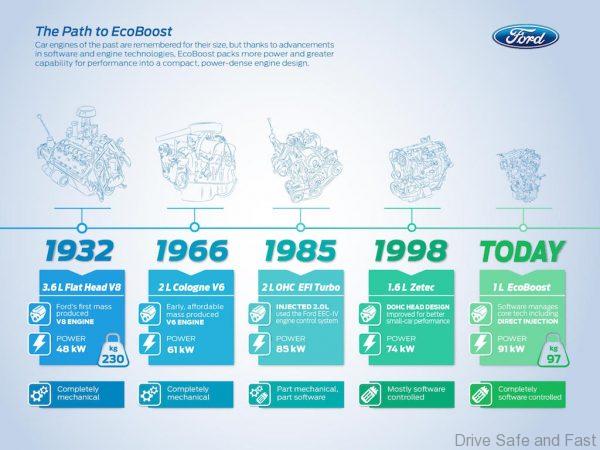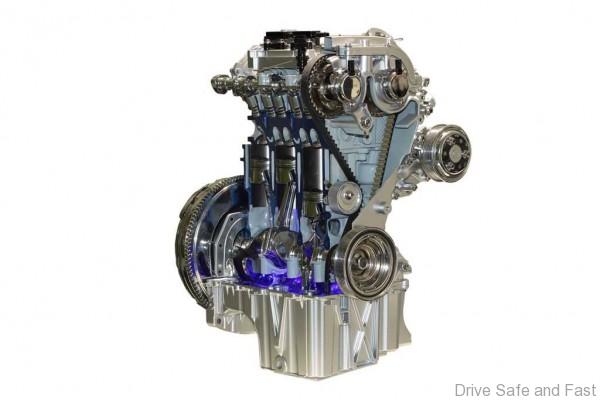The Secret Ingredient in the Award-winning EcoBoost
For the fifth consecutive year, the Ford 1.0-liter EcoBoost has been named “Best Engine” in its class at the 2016 International Engine of the Year Awards, based on drivability, performance, economy, refinement and technology.

A lot of ink has been spilled about the award-winning recipe of the Ford EcoBoost engines. But what many people don’t know is that the secret sauce actually lies in the software – and it’s been brewing for more than 40 years. Lift the hood of any EcoBoost-powered Ford and the eye is drawn immediately to the engine – few would notice the little black box discretely located to the side. But unbeknownst to many, that diminutive box holds the key to the EcoBoost’s balance of power and fuel economy: millions of lines of code.
So Ford began to tinker. New three-way catalytic converters helped reduce pollutants, but they required more precise control. To meet this challenge, Ford introduced its first electronic engine controller (EEC), the earliest form of what is now known as the engine control unit (ECU) – that little black box that accompanies every engine. The first three generations of EEC gave Ford vehicles basic control of key engine elements, including electronic fuel injection, spark control and air-fuel ratio. But the major breakthrough in software processing came in the mid ‘80s with the introduction of EEC-IV and EEC-V.

At the same time, the advent of onboard diagnostics (OBD) also took off. By the mid ‘90s engines were completely controlled electronically. Computing software had also become more than just about engine control – advances in OBD, transmission and fuel management meant a smooth, more efficient driving experience. In 2003 another major breakthrough hit – Ford introduced drive-by- wire. This meant that drivers were no longer linked mechanically to the engine; instead their accelerator inputs were fed through the ECU that directly controls the engine. Because of this, engineers could fine tune every system to make the driving experience even more efficient in delivering power and economy.
EcoBoost: Built on software
Rollinger has a wealth of automotive software control experience, and has been front and centre for some of Ford’s major computing and software milestones. But for him, nothing has been as impressive as the advent of the software for EcoBoost engines. The team of in-house software control engineers – today 100 and counting – were handed the difficult task of achieving unprecedented levels of fuel efficiency without compromising power, using a combination of software and the latest iteration of engine technologies like direct injection, variable valve timing and turbocharging.

To achieve the proposed level of power and efficiency for the new generation engines, an extraordinary level of precision was required. From ultra-precise fuel injections to continuously fluctuating fuel injection pressure, minuscule changes controlled by software made all the difference. For example, injection timing is adjusted up to 300 times a second to optimise combustion, resulting in a cleaner, more efficient burn.
The outcome was a fuel efficient and power-dense engine. The high-power output meant a smaller EcoBoost engine achieved the same output as a larger, traditional engine. The EcoBoost software also helped the team to eliminate the traditional limitations of turbocharged engines, such as turbo lag – this means that when a driver steps on the accelerator, there’s minimal delay and they’ll immediately feel that soulful “oomph” of the EcoBoost engine.

The heart of the EcoBoost software responsible for this is composed of a unique database – built completely in-house – of information about how the engine and transmission operates. The engine has access to this deep library of data to enable the engine to play a lot of “what if” scenarios to prepare for anticipated driver demands. Whatever the engine anticipates for, the driver is ensured a seamless and exhilarating driving experience.














